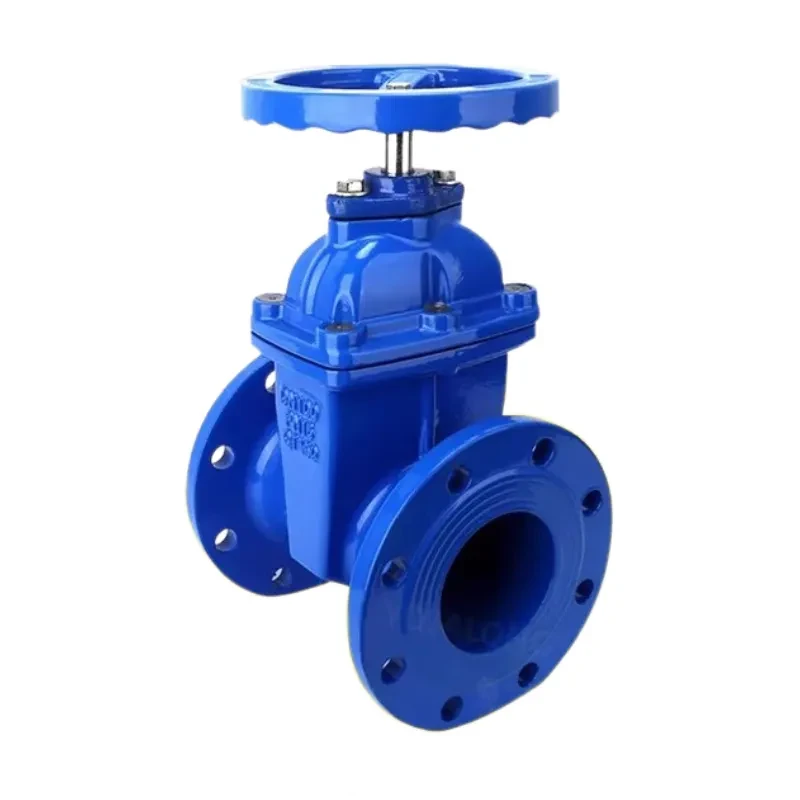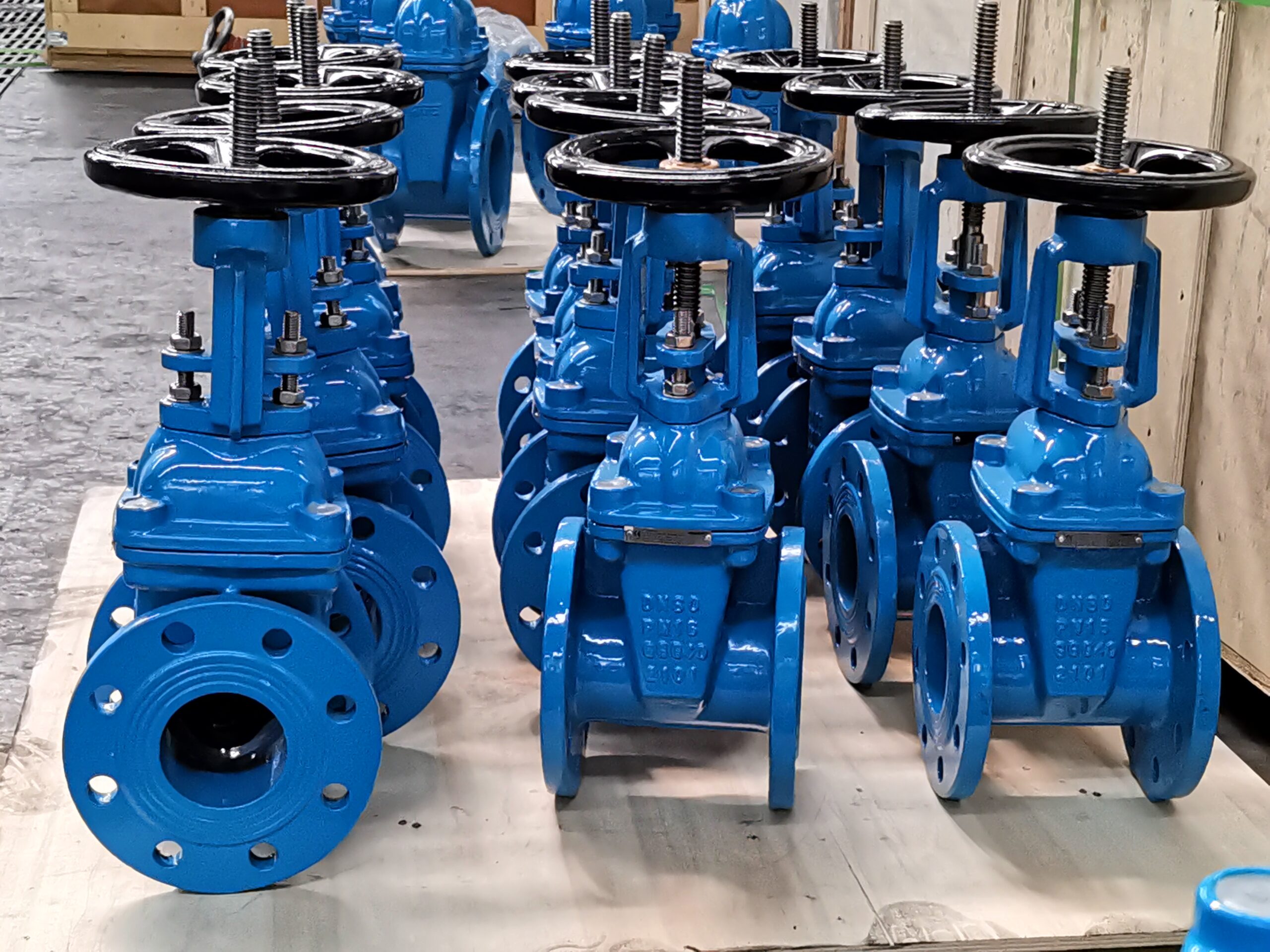Каждый тип задвижки обладает своими уникальными характеристиками., почти как личности, perfectly tailored to tackle different challenges in fluid control. В этой статье, we embark on a journey to uncover the quirks and capabilities of these gate valve companions, discovering where they shine brightest. From handling the gentle flow of water to the mighty rush of oil and gas, understanding the nuances between these gate valves is akin to mastering the art of orchestrating fluid dynamics in industrial symphonies. Let’s delve into the world of gate valves and explore the differences and applications of three distinct types: ручной задвижка, чугунная задвижка, and non-rising stem gate valve.
Manual Gate Valve
Проектирование и эксплуатация:
А ручной задвижка, also known as a knife valve or slide valve, is a linear motion valve. It features a flat closure element (the “gate”) that slides into the flow stream to provide shut-off. The valve’s operation involves moving the gate perpendicular to the flow direction. Manual actuation (usually via a handwheel) controls the gate’s position.
Преимущества и недостатки:
Преимущества:
- Inexpensive and easy to maintain.
- Excellent for on-off services.
- Inherently fire-safe when used with a metal sheet.
Disadvantages:
- Poor throttling characteristics due to erosion of the seat and disk during throttling.
- Slow open and close time.
- Not suitable for sanitary applications.
Приложения:
- Used in various industrial sectors, в том числе нефть и газ, pharmaceuticals, производство, automotive, and marine.
- Ideal for slurries and viscous liquids (например, heavy oils, molasses, cream).
- Wherever a reliable shutoff valve is needed.
Cast Iron Gate Valve
Design and Features:
Чугунные задвижки are commonly made from ductile iron or cast iron. They come in both rising stem and non-rising stem designs. Rising stem gate valves have a stem that moves vertically during operation. Non-rising stem gate valves have a stationary stem, simplifying installation and maintenance.
Преимущества и недостатки:
Преимущества:
- Space-saving design (non-rising stem).
- Suitable for underground applications and ships.
- Resilient seated versions available for water treatment.
Disadvantages:
- Limited stem lubrication (non-rising stem).
- Corrosion susceptibility (non-rising stem).
Приложения:
- Cast iron gate valves find use in water treatment, управление сточными водами, and other industrial processes.
- Non-rising stem variants are popular where vertical space is limited.
Задвижка с невыдвижным штоком
Design and Functionality:
Unlike traditional rising stem gate valves, China non-rising stem gate valves operate differently. The stem does not move visibly during valve operation. Instead, it rotates within the valve body to raise or lower the gate.
Преимущества и недостатки:
Преимущества:
- Space-efficient (no need for extra space above the valve).
- Easy installation and maintenance.
Disadvantages:
- Limited stem lubrication.
- Potential for corrosion.
Приложения:
Widely used on ships, in underground installations, and wherever vertical space constraints exist. Suitable for applications requiring infrequent valve use.

В итоге, gate valves play crucial roles in various industries. Whether you need a reliable shutoff, space-saving design, or specialized features, understanding the differences between these gate valve types ensures optimal selection for your specific application needs.
